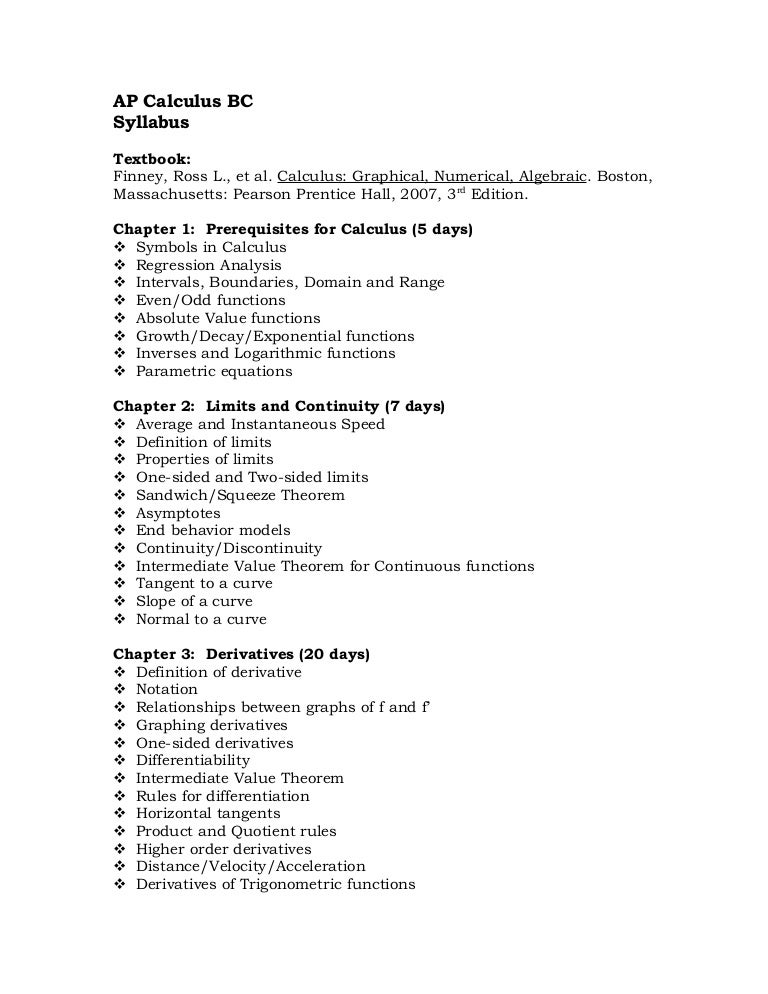The basic rules of Differentiation of functions in calculus are presented along with several examples. 1 - Derivative of a constant function. The derivative of f(x) = c where c is a constant is given. 3.3 Rules for Differentiation Calculus 3 - 10 For polynomial functions it is not always necessary to use the product rule, however, with trigonometric, exponential, logarithmic, and other functions, it is a necessary tool. Rules of Differentiation in Calculus. In what follows f, g, and h are functions of the variable x. K is a constant. Definition of the Derivative of a Function.
More Videos
3 Rules Of Differentiationap Calculus 14th Edition
Calculus is a branch of mathematics that focuses on the calculation of the instantaneous rate of change (differentiation) and the sum of infinitely small pieces to determine the object as a whole (integration). Two popular mathematicians Newton and Gottfried Wilhelm Leibniz developed the concept of calculus in the 17th century.
Today, this is the basic entry point for students who want to learn chemistry, physics, science, economics, or finance etc. If you wanted to calculate the position of the space shuttle from shuttle then it is possible through calculus even the problem is complex or quite difficult. These days there are a plenty of computer tools that can be used to solve the calculus problem in minutes.
Learn for free about math, art, computer programming, economics, physics, chemistry, biology, medicine, finance, history, and more. Khan Academy is a nonprofit with the mission of providing a free, world-class education for anyone, anywhere. Section 3.3 Rules of Differentiation 1 October, 2014 Usage Notes These lecture notes are largely based on 2007 edition of Calculus: Graphical, Numerical & Algebraic, by Kinney, Demana, Waits & Kennedy published by Peason Education, Inc.
What is Differentiation in Calculus?
The process of finding derivatives or instantaneous rate of change with respect to a function, it is termed as differentiation. In contrast, this is possible to carry out differentiation by real algebraic manipulations, rules of operations, and the information on how to manipulate functions.
Differentiation is a technique to measure the rate of change for curves, graphs, images, etc. You can determine the tangent or slope along a given direction.With this process, you can also check where the lower and upper values occur. The early applications of differentiation in calculus include planetary motion, gravity, ship design, fluid flow, geometrical shapes, and bridge engineering etc.
List of Basic Differentiation Formulas
Take an example of the small curve whose slope or tangent is difficult to calculate without the right technique. Here, we had to use a list of basic differentiation formulas to make the process easier. You can also calculate the average rate of change over the longer time intervals where actual speed is difficult to determine without proper formulas.
Partial Differentiation Calculus Formulas
Partial derivatives in the mathematics of a function of multiple variables are its derivatives with respect to those variables. Partial derivatives are used for vectors and many other things like space, motion, differential geometry etc.

Differentiation Calculus Rules
The derivatives are used to calculate the slope of a function at any given point. There are differentiation rules that can be used in different conditions as per the requirement. They are tough to understand at a first glance, So, you need a proper understanding of the rules before you actually implement them for the complex problems.
Why do students need to learn Differentiation Formulas?
The applications of derivatives in real-life are just the endless and they can be utilized in almost every sector like physics, chemical engineering, science, space, differential geometry, ship design, fluid flow, bridge manufacturing, and many more. These are some practical examples where differentiation formulas are needed to calculate the slope or tangent of a function.
Other than this, differentiation formulas can also be used for the preparation of competitive exams, and higher studies. They are taken an important part of the curriculum and need continuous practice to solve tough problems. They sound difficult if you don’t any in-depth understanding of differentiation formulas. SO, they are necessary to learn by students during schools and colleges etc.
Related posts:
« Previous | Next »
3 Rules Of Differentiationap Calculus Calculator
This section explains what differentiation is and gives rules for differentiating familiar functions.

» Session 1: Introduction to Derivatives
» Session 2: Examples of Derivatives
» Session 3: Derivative as Rate of Change
» Session 4: Limits and Continuity
» Session 5: Discontinuity
» Session 6: Calculating Derivatives
» Session 7: Derivatives of Sine and Cosine
» Session 8: Limits of Sine and Cosine
» Session 9: Product Rule
» Session 10: Quotient Rule
» Session 11: Chain Rule
» Session 12: Higher Derivatives
» Problem Set 1
« Previous | Next »
Welcome!
This is one of over 2,400 courses on OCW. Explore materials for this course in the pages linked along the left.
3 Rules Of Differentiationap Calculus Algebra

MIT OpenCourseWare is a free & open publication of material from thousands of MIT courses, covering the entire MIT curriculum.
3 Rules Of Differentiationap Calculus Solver
No enrollment or registration. Freely browse and use OCW materials at your own pace. There's no signup, and no start or end dates.
Knowledge is your reward. Use OCW to guide your own life-long learning, or to teach others. We don't offer credit or certification for using OCW.
Made for sharing. Download files for later. Send to friends and colleagues. Modify, remix, and reuse (just remember to cite OCW as the source.)
Learn more at Get Started with MIT OpenCourseWare
